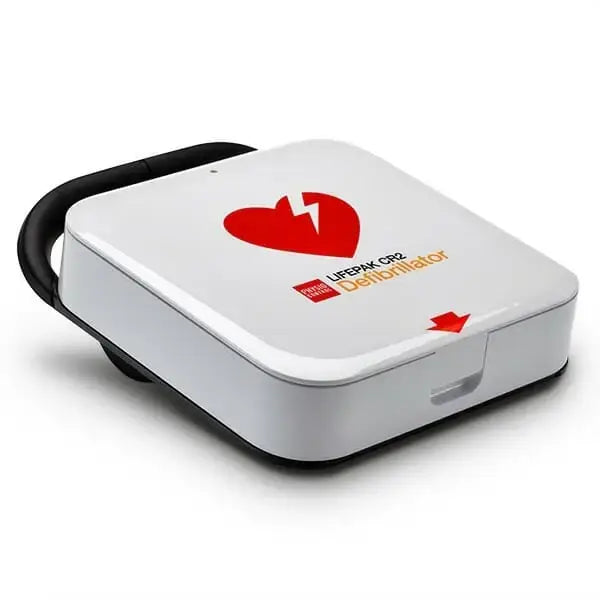Bridging the Life-Saving Gap

In recent years, a significant advancement in Canadian emergency response training has emerged: the widespread inclusion of Automated External Defibrillator (AED) training in standard First Aid and CPR courses. This integration represents a critical step forward in public health safety, but a concerning gap remains between training and implementation. While more Canadians than ever are learning how to use these life-saving devices, many workplaces and public spaces still lack the actual equipment needed during cardiac emergencies.
The Evolution of First Aid Training in Canada
First Aid and CPR certification programs across Canada have evolved substantially, recognizing that cardiac emergencies require more than just manual resuscitation techniques. The integration of AED training into standard certification courses acknowledges a crucial reality: when someone suffers sudden cardiac arrest, every minute without defibrillation reduces survival chances by 7-10%.
Modern certification courses now routinely include comprehensive instruction on:
- Recognizing signs of sudden cardiac arrest
- Properly operating portable defibrillator units
- Understanding the automated analysis process
- Correct pad placement for effective defibrillation
- Coordinating AED use with CPR procedures
- Following post-shock protocols
This expanded training prepares individuals to act confidently during those critical moments when a heart stops beating effectively. For workplace safety officers, recreation facility staff, educators, and healthcare professionals, this knowledge has become an essential component of emergency response preparation.
The Implementation Gap: Training Without Tools
Despite this positive trend in emergency training, a troubling disconnect exists. While thousands of Canadians complete AED training annually as part of their Standard First Aid certification, many return to workplaces and community spaces that lack the very equipment they've been trained to use.
Current regulations require many businesses and organizations to have certified First Aid responders on staff, but these same entities often aren't required to have automated external defibrillators on site. This creates a dangerous scenario where trained responders know exactly what to do during cardiac emergencies but lack the essential equipment to take action.
Consider these sobering statistics:
- Sudden cardiac arrest survival rates increase by up to 75% when an AED is used within the first few minutes
- For every minute without defibrillation, survival chances decrease significantly
- Ambulance response times, even in urban centers, often exceed the critical 3-5 minute window for effective defibrillation
- Over 50,000 Canadians experience sudden cardiac arrest annually, often in public spaces
This gap between knowledge and equipment availability represents thousands of potentially preventable tragedies each year across Canada.

https://aed.ca/products/stryker-physio-cr2-semi-auto-english-wifi
The Business Case for AED Implementation
For organization leaders concerned about costs, it's important to understand that modern automated external defibrillators have become increasingly affordable and user-friendly. Today's units feature:
- Fully automated operation with voice guidance
- Self-testing capabilities ensuring readiness
- Long battery life with minimal maintenance
- Child/pediatric capabilities through adaptable pads
- Data recording for post-event analysis
- Robust construction for various environments
The initial investment in a quality defibrillator is significantly outweighed by the potential to save lives. Many organizations also discover insurance benefits and risk management advantages that offset acquisition costs.
AED.ca: Canada's Trusted Source for Life-Saving Equipment
When looking to bridge this critical gap between training and implementation, Canadian organizations increasingly turn to AED.ca, the country's premier provider of automated external defibrillators and accessories.
AED.ca distinguishes itself through:
- Comprehensive selection of Health Canada approved defibrillators
- Expert consultation to determine the ideal unit for specific needs
- Nationwide shipping and professional service
- Maintenance programs ensuring long-term reliability
- Training resources complementing existing certification
- Replacement parts including batteries and electrode pads
- Comprehensive AED program management solutions
Their team specializes in helping organizations not just acquire equipment, but implement complete heart-safe programs that align perfectly with existing First Aid certification programs.
Moving Toward Comprehensive Emergency Preparedness
As more Canadians receive valuable AED training through their Standard First Aid certification, the logical next step is ensuring this knowledge can be applied when needed most. Progressive organizations aren't waiting for regulatory requirements to catch up—they're proactively installing these life-saving devices in:
- Office environments and corporate campuses
- Manufacturing facilities and construction sites
- Schools, universities and childcare centers
- Community centers and places of worship
- Sports facilities and fitness centers
- Retail establishments and shopping centers
- Home and multi-residental properties
The combination of proper training and accessible equipment creates truly heart-safe environments where cardiac emergencies become survivable events rather than tragedies.
Conclusion: Closing the Safety Gap
The inclusion of defibrillator training in Canadian First Aid courses represents significant progress in emergency preparedness. However, this knowledge reaches its full potential only when paired with readily available equipment.
Organizations that bridge this gap by partnering with trusted suppliers like AED.ca demonstrate not just regulatory compliance, but genuine commitment to the wellbeing of employees, customers, and community members. As public awareness grows and costs continue to decrease, we can hope that soon the presence of these life-saving devices becomes as common as fire extinguishers in Canadian facilities.
Until regulations fully catch up with best practices, the decision to implement AED programs remains in the hands of forward-thinking organizational leaders who recognize that some investments transcend the balance sheet—they save lives.
For more information on bringing AEDs to your organization, visit AED.ca, Canada's leading provider of automated external defibrillators and comprehensive heart safety programs.






